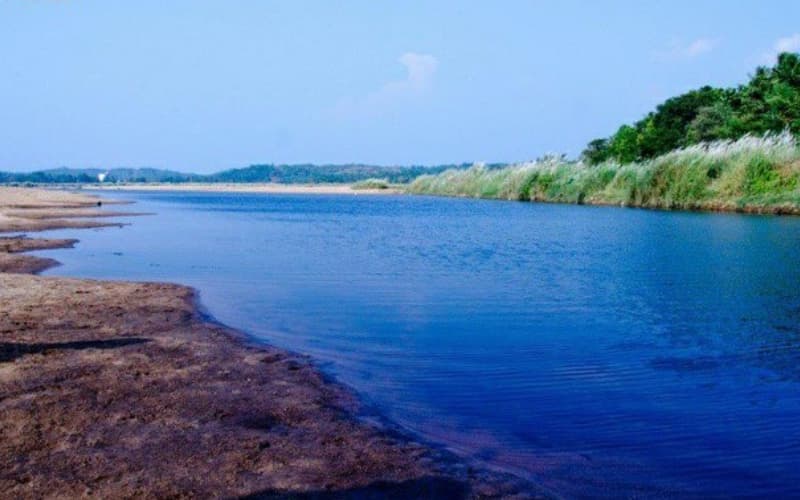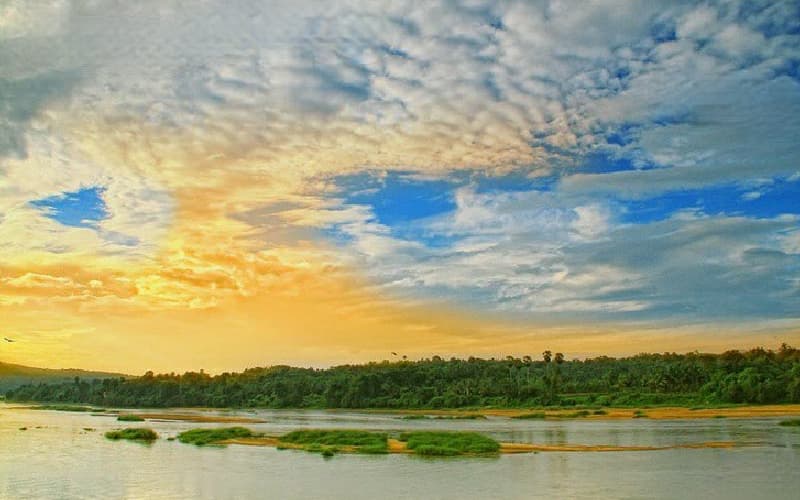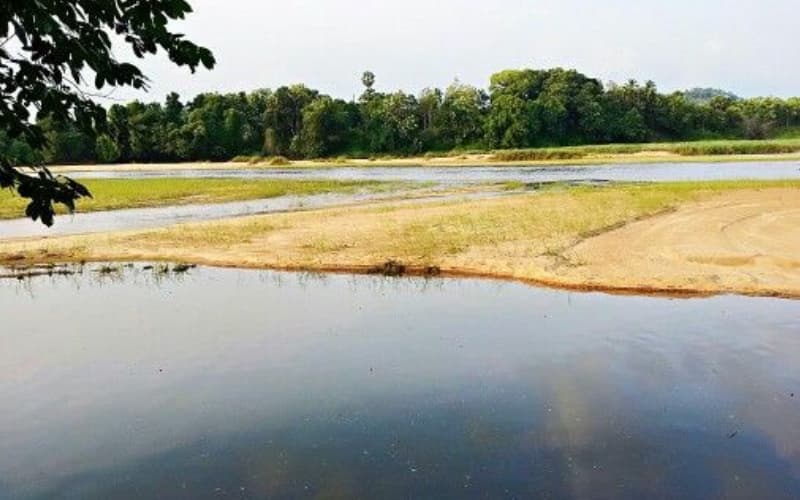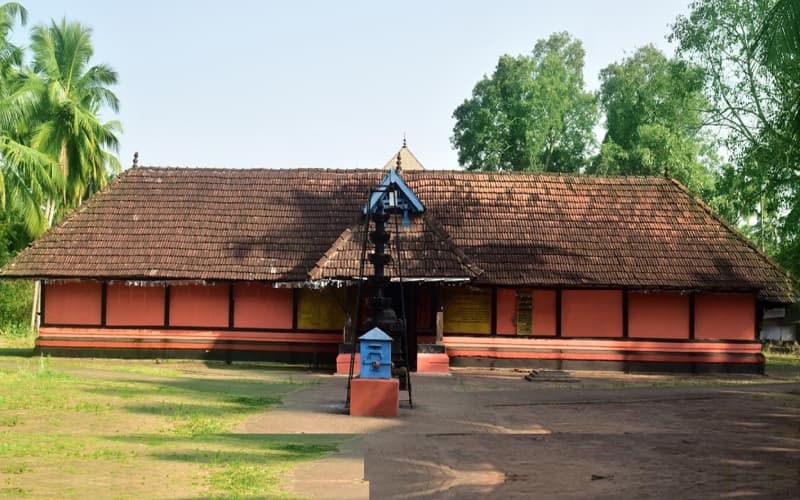
Bharathapuzha has its origin from the Anaimalai Hills in the Western Ghats in Tamil Nadu and along its course is known by various names like the Perar, Ponnani Puzha, Walayar Puzha etc. The river finally discharges into the Arabian Sea at Ponnani. Nila river has three chief tributaries adding life to the stream. The mainstream of Bharathapuzha flows into the land of Kerala from the arid plains of Coimbatore through Palakkad. Bharathapuzha is often referred to as a lifeline with regard to the connectivity it provides between the harbours on the West Coast and the hinterlands in Tamil Nadu. The River is referred to as “Perar” in ancient scripts and documents.

Approximately for the first 40 kms, the Bharathapuzha follows an almost northerly course till Pollachi near Coimbatore. At Parli, the Kannadipuzha and Kalpathipuzha River merge and flow as Bharathapuzha, following a westerly course until it empties into the Lakshadweep Sea at Ponnani. At Mayannur, Gayathripuzha merges with the river. The Thuthapuzha merges with the Nila at Pallippuram. As the Thootha River is rich in water, after its merger, the Nila becomes thicker inflow. The Bharathapuzha basin is the largest among all the river basins in Kerala.

The Bharathapuzha is extensively dammed. There are 11 reservoirs along the course of the river, and two more are under construction. Malampuzha dam is the largest among the reservoirs built across Bharathapuzha and its tributaries. Other dams in the Bharathapuzha basin are Walayar Dam, Mangalam Dam, Pothundi Dam, Meenkara Dam, Chulliyar Dam, Thirumoorthy, Aliyar, Upper Aliyar, Chitturpuzha regulator and Kanjirapuzha Dam. Most of these reservoirs serve the purpose of irrigation only.
Bharathapuzha is the lifeline of Kerala's cultural map. Kerala Kalaamandalam, which is a major centre for learning Indian performing arts like Kathakali, Koodiyattam and Ottamthullal, is situated at Cheruthuruty on the banks of this river—in Thrissur district. The birthplace of famous Malayalam satire poet and founder of the Ottamthullal art form, Kunchan Nambiar, is located at Killikkurissimangalam near Lakkidi, again on the banks of the Nila.
Places & Temples Connected to River Nila:
1. Thrithala Mahadeva Temple:

Thrithala Mahadeva Temple is in a village in Pattambi taluk in Palakkad district, Kerala. This is an important archaeological site of Kerala. Thrithala is located 75 kilometres from Palakkad, on the banks of the Bharathapuzha River. The most fascinating thing about this temple is that it is an ancient archaeological site of Kerala and is still preserved. The place is known for its excellent Ayurvedic treatments offered in some of the best tourist centres and hospitals built on site.
According to a myth, the story has its root in the central legend of Kerala, Parayi Petta Panthirikulam (the twelve sects born out of a Pariah women). The first child of Vararuchi and Panchami was born on the banks of river Nila. Vemancheri Brahmin family who resided nearby adopted the charming baby boy and named him Brahmadatha. The boy was extraordinary right from childhood.
Once he went to Nila with his mother. While his mother was bathing, the little boy made an idol of Shiva on a plate with the sand from the river. When they were about to return to their home, mother tried to take back the plate, it remained unmoved. The idol was later consecrated in Thrithala Shiva Temple, one of the prominent temples of Kerala.
2. The Yagneswara Temple:
Yagneswaram is the place that staged the Somayagas of Agnihotri. It is in the place near Thrithala Velliyankal in the Palakkad-Edappal route. The Shiva Linga and the idol of Vishnu which arose from the ritual fire, were consecrated here. Shiva and Vishnu are the prime deities here while Ganapathi, Dakshinamurthy, Nagaraja, and Mookkuthala Bhagawathi are the sub-deities. Water from the Bharathapuzha is used for Poojas in the temple. And the soil of the place is considered holy and is used for rituals.
3. Vemancheri Mana:
The Vemancheri Mana where Brahmadatha was brought up is different from other Brahmin houses. The house has the same dimension as the Yagashaala. Brahmadatha has fixed a gilded spike in a room in the west end. At its place now, there stands a stone lamp which is always lit. In the middle of the Mana, a coccinea is planted inside a masonry which is regarded as Goddess. The house made of Laterite stones is still maintained in its antiquity. The family has shifted to a nearby building so that the holiness of the house does not diminish. The prayers and rituals in the house continue even today without fail.
4. The Story of Velliyankalu:

Once there was a torrential flow in the river Kaveri which swept off the dam. As people panicked over the situation, which was turning uncontrollable, a lady had a vision. She went to the Chola king and said that the issue can be fixed if Mezhathol Agnihotri of Kerala could visit the place.
The King’s men went in search of him and he came over. He understood that the calamity is suggestive of the narrow-hearted people and their cruelties. He jumped into the river and remained inside for three days.
Finally, on the third day he came out of the river with three spikes in his hand made of gold, silver, and copper. By the time, the river was calm. He fixed the golden spikes in his house, the silver one in the Bharathapuzha, and the third one in the Kodikkunnathu Bhawathi Temple, a few kilometres away from the place. The spike which was fixed in the Bharathapuzha became the Velliyankalu.
References:
NEXT ARTICLE